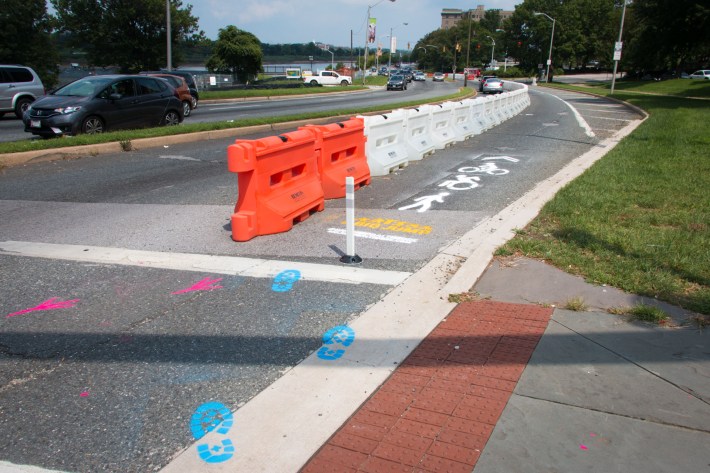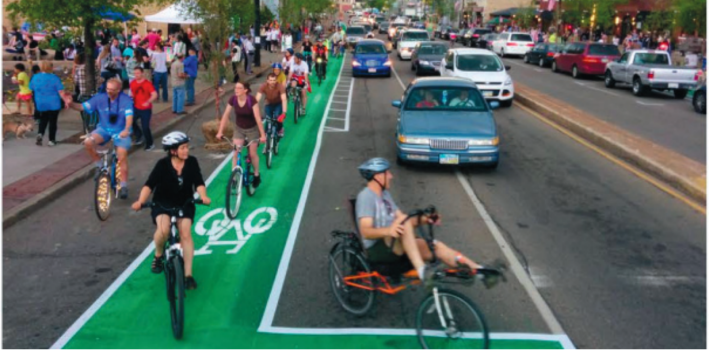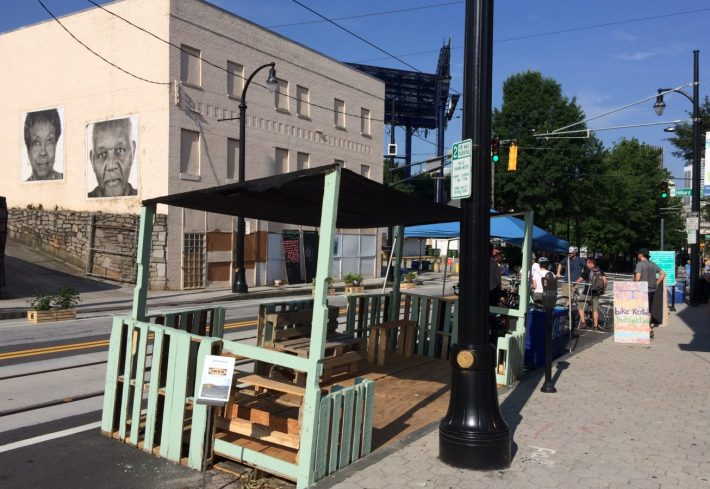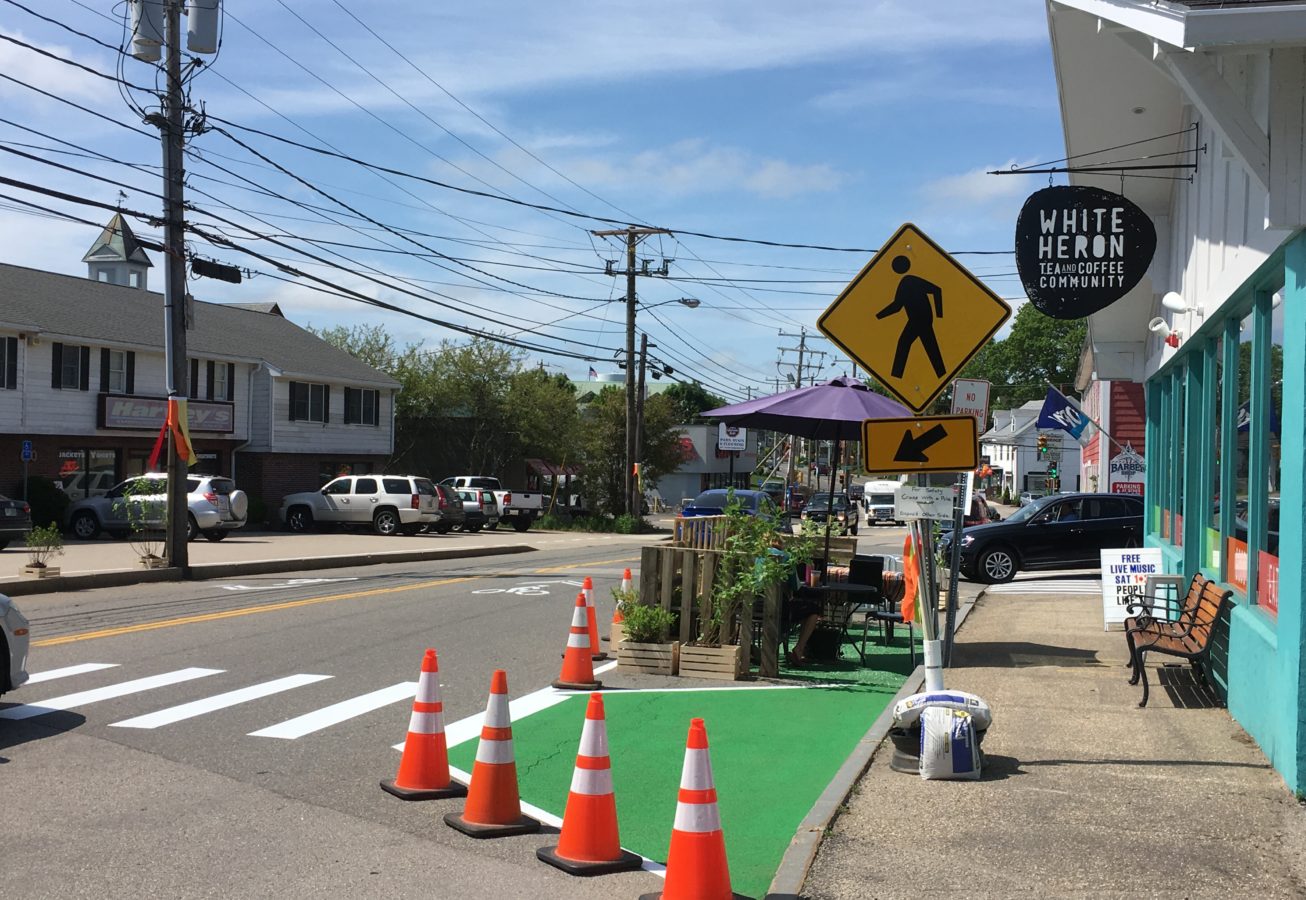Editor's note: Today, we're launching a series on how cities and citizens can coordinate an efficient and effective emergency response to the unprecedented impact the novel coronavirus crisis is having on our nation's roads and streets. Follow the hashtag #COVIDSafeStreets to follow along as the series continues.
As roads empty out in the wake of COVID-19, the drivers who remain are speeding up — and advocates argue that if we want to prevent a second pandemic (this one featuring dead pedestrians), we need to do everything we can to slow drivers down.
New York City's speed cameras have been issuing about the same number of tickets since the Coronavirus crisis began, despite a 51-percent plunge in cars on the road — and some analysts say 80 percent more drivers are exceeding the posted limit than this time last year. Minnesota State Police have also reported an increase in speeding, especially among cases where drivers exceed 100 miles per hour. Even mild-mannered Canucks are out drag racing on the highways of Toronto as we speak.
The reason is obvious to transportation planners: for better or worse, cars slow down other cars, especially when there are enough of them to form a traffic jam. And with congestion virtually non-existent across North America, advocates are urging their leaders to take action and find better ways to slow down drivers, ideally in the ways we should have been doing it all along: by implementing human-centered road design.
"We do have fewer car crashes right now, because there are fewer cars," said Jacque Knight, a St. Louis-based traffic planner. "But the crashes we do have are likely to be more severe because speed is the biggest determinant of serious injury and mortality — especially for pedestrians. Our hospitals can't handle that right now."
The bad news? Most cities aren't heeding the call. The good news? If they did, they'd find a universe of ultra-quick, social-distancing-friendly, inexpensive ways to curb our traffic violence crisis.
Tactical urbanism as emergency response
So what would it take to redesign roads to slow down traffic across your city right now — rather than after months of expensive, arduous traffic studies?
The answer is simple, cheap, and yes, socially distant — and it's rooted in the gloriously creative world of tactical urbanism.
Coined in its modern usage around 2010 by urban planner Mike Lydon, tactical urbanism refers to a class of inexpensive, temporary projects designed to demonstrate the transformative power of simple modifications to public space. But in the face of a pandemic and a consequent speeding crisis, cities around the world are showing that tactical urbanism can double as a form of emergency response, too — especially when it's used to slow car traffic.
Bogota famously launched 47 miles of temporary bikeways almost overnight to promote social distancing and slow cars on the newly-narrowed roads, all using little more than plastic bollards; Mexico City is reportedly exploring a similar program.
"The most exciting stuff we're seeing is in cities that have had tactical urbanism programs for years, and they're leveraging them now, " said Lydon.
But even city leaders who think they've never heard of tactical urbanism are probably practicing it in some form already. Utility companies routinely close off sections of the street to cars using everyday traffic cones, a tried and true method of calming car traffic, even if that isn't the utility companies' intent. And in the age of COVID-19, we're seeing other forms of accidental tactical urbanism crop up, too: restauranteurs around the country are prohibiting parking in front of their businesses to facilitate safe take-out pick up — a move that's inadvertently extending the sidewalk for walkers, while slowing down car traffic in the adjacent lane to boot.
Citizens rarely bat an eye at these kinds of accidental tactical interventions, advocates like Lydon point out, even if the changes do slow down commutes. And in the age of COVID-19, it may be time for cities to start treating traffic calming in the same way as they typically treat utility projects — by simply doing them, without the kind of lengthy public process and expensive traffic studies that usually accompany other road projects.
"We under-estimate the capacity of human beings to be self-policing and aware at these times," said Lydon. "Right now, we just need action — because people are going to go outside because they need to be outside, they're going to cross streets, and we need to keep them safe."
How anyone can slow a speeding car
The smartest local leaders are already reaching out to professional firms like Lydon's Street Plans for emergency traffic-calming help (San Francisco is reportedly one of them). And advocates are optimistic that with a little organizing power, citizens can convince their local governments to make a similar investment in their traffic calming — whether that involves hiring a pro to help them strategize, or simply re-purposing their road crews to build temporary bike lanes today.
"Somewhere in your city, some department probably has a lot of cones sitting around right now," says Tony Garcia, Lydon's co-author of "Tactical Urbanism: The Book," and co-principal of Street Plans. "Or they've got French barricades, or stanchions, or some other kind of cheap delineator that they usually use for special events — and all of those events, of course, are cancelled right now. Anything that’s going to make a street look like a construction site is going to slow drivers down. "
Garcia and Lydon both emphasize that most forms of tactical urbanism can be conducted by small work crews who can maintain good social distancing practices while they're putting up temporary bulb-outs at intersections — which could be a great way to get Americans safely back to work.
But say the mayor still doesn't want to transform her streets department into a temporary tactical urbanism corps — and you, average-citizen-Streetsblog-reader, want to go it alone. Many cities actually have great processes in place for approving and supporting citizen-lead TU projects — and if they don't, it's a really good time to tell your leaders that they should.
In the meantime, for your inspiration, here are a few tactical traffic calming measures that we should be pushing to put in place in our streets however we can:
1. The stanchion-protected bike/ped path
Narrowing the road is the simplest and most effective way to slow down cars — and reclaim space for walkers and cyclists. Tip: 8 feet seems to be a great width for social distancing mixed-use paths like this.

2. The traffic-cone curb-extension
Can't get access to traffic cones? Hay bales, toilet plungers, planter boxes, and pretty much anything big, sturdy and ideally brightly-colored will do.

3. The fakey bike lane
Would you believe this bike lane was painted by non-professionals in a single day, using materials that cost under $95? It's true! Here's a guide to build your own.

4. The pallet in a parking space
America has four parking spaces for every car on the road — and at a time when very few people are moving around, we really don't need them all. Putting something big and bulky in every street parking spot that's sat empty for the last two weeks will slow down adjacent traffic a lot; a pallet of wood for a street musician to use as an impromptu stage is one great use of this newly activated space.







